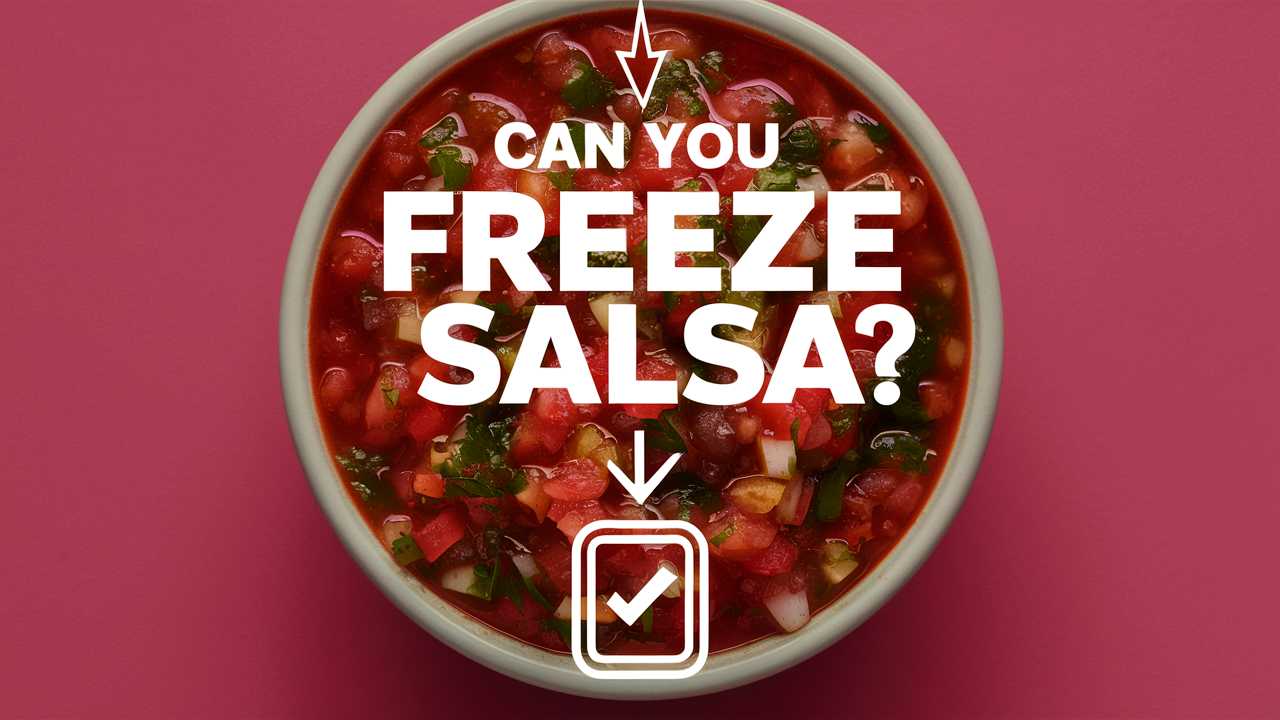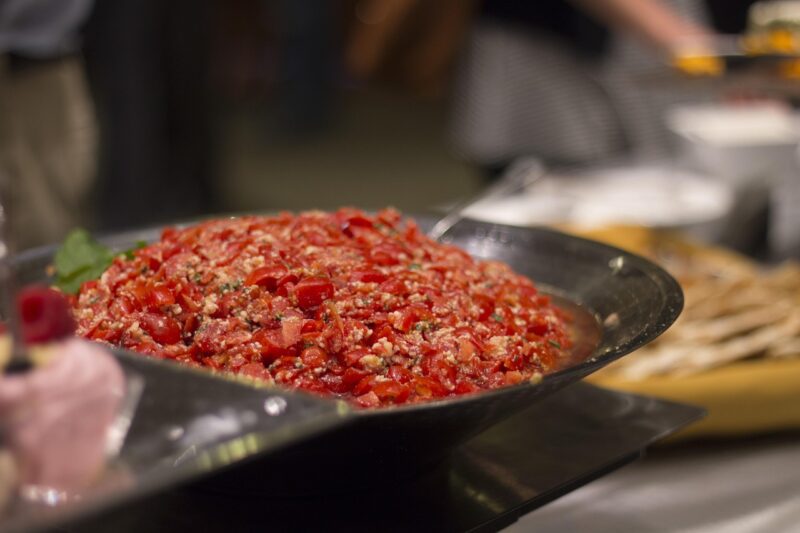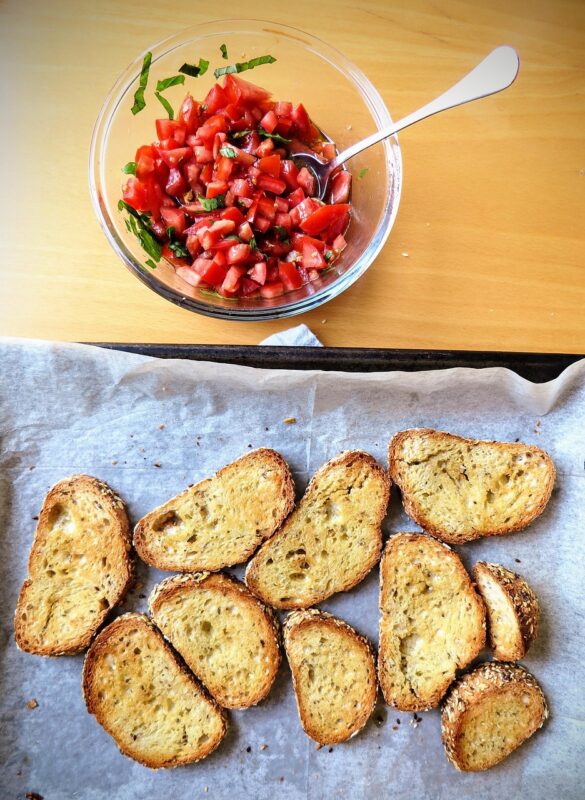Can you freeze salsa? This blog post will explore the intricacies of freezing salsa, investigating the types of salsa, the freezing process, preservation tips, and even the implications for taste and texture once it is thawed.
Can You Freeze Salsa? The Answer is Yes!
The straightforward answer to the question is a resounding yes. You can freeze salsa effectively, which is a fantastic option for preserving leftovers from a large batch or making use of an abundant tomato harvest in your garden. However, the complexity lies in how different types of salsa respond to freezing and what impact this has on their flavor and texture.
How to Freeze Salsa Effectively
If you want to freeze salsa successfully, follow these steps to ensure the best results:
Choose the Right Salsa: Opt for cooked salsa if you’re considering freezing. Its thicker consistency tends to hold up better than fresh versions.
Portion It Out: Use freezer-safe containers or resealable plastic bags. If you’ll be using small amounts often, consider freezing in ice cube trays and transferring the cubes to a bag for easy single portions.
Leave Room for Expansion: Salsa will expand when frozen, so it’s wise to leave a bit of space at the top of the container or bag.
Label and Date: Don’t forget to label each container with the date and type of salsa. This will help you keep track of freshness.
Seal Well: Ensure each container or bag is sealed tightly to prevent freezer burn and maintain flavor.
Freeze: Place it in the freezer, and it can last for up to six months.
What Happens to Salsa When You Freeze It?
Freezing salsa alters its structures. Ice crystals form, which can change the texture of the tomatoes and other fresh ingredients, making them softer upon thawing.
For instance, when you freeze a fresh pico de gallo, the tomatoes can become mushy and watery. This is why cooked salsas tend to yield better results after thawing. However, the good news is that while the texture might be affected, most flavors remain intact, and you can still enjoy your salsa in various dishes.
The Science of Freezing: Understanding Texture Changes
When we freeze any food, including salsa, the process involves freezing moisture. Salsa traditionally contains water-rich ingredients, like tomatoes and onions.
Ice Crystal Formation: As water freezes, it expands and forms ice crystals. These crystals can act like tiny knives, rupturing the cells within fruits and vegetables, altering their structure. This is why thawed salsa may not retain the same crispness, particularly in fresh salsas.
Effect on Flavor: With that said, flavor compounds in salsa, such as the acids in tomatoes and the oils in garlic, can remain stable during freezing. Thus, while the texture may change, the essence of the flavors typically stays intact.
Rehydration: When thawed, salsa may look less vibrant. However, once incorporated back into a dish or blended again, it can regain some of that original appeal.
The Thawing Process: Tips and Tricks
How you thaw your salsa can significantly impact its texture and overall quality. Here are some best practices for thawing:
Refrigerator Thawing: The safest method is to transfer your salsa from the freezer to the refrigerator. This allows it to thaw slowly and evenly, minimizing bursts from ice crystals.
Cold Water Bath: If you’re short on time, submerging your sealed salsa in a cold water bath can accelerate the thawing process without overheating it.
Microwave Method: While not ideal due to the risk of cooking the salsa unevenly, the microwave can be a quick solution in emergencies. Use a low power setting and check frequently.
Taking the time to use one of these methods instead of leaving salsa out at room temperature helps ensure the safety of the food while preserving its quality.
Unique Uses for Thawed Salsa
Once you’ve successfully thawed your salsa, think beyond simply dipping chips into it. Here are some creative uses that might inspire you:
Cooking Base: Use it as a flavorful base for soups, stews, or chili. The spices and herbs in salsa can enrich these dishes, creating a savory depth.
Marinades: Thawed salsa can serve as a quick marinade for meats and vegetables, infusing them with flavor before cooking.
Cooking Grains: Stir it into rice, quinoa, or couscous after cooking for a zesty side dish that’s bursting with flavor.
Savory Flatbreads: Spread it as a base on flatbreads or pizza before adding toppings for a unique twist.
Egg Dishes: Stir into scrambled eggs or use as a topping for an omelet, bringing a burst of freshness to breakfast.
Alternatives to Freezing: Other Storage Methods
While freezing is an effective way to preserve salsa, it’s not the only method. If you find yourself with an abundance of salsa, consider several viable alternatives:
Canning: If you have canning experience, consider preserving salsa in jars. This method keeps salsa shelf-stable and can yield a product that retains more of its original texture.
Refrigeration: Most salsas stay fresh in the refrigerator for about a week. Store them in airtight containers to maintain their quality.
Pickling: A fun twist to experiment with, pickling your salsa can add new flavors and extend its shelf life while enhancing the original taste.
Preserving Flavor: Balance is Key
In crafting your salsa for freezing or other storage, keep in mind the balance of flavors.
Acidity Levels: The acidity of tomatoes, lime juice, or vinegar plays a crucial role in maintaining salsa’s vibrant flavor over time. Salsa with balanced acidity tends to freeze better and longer.
Spiciness: Consider the heat level of your salsa if you plan on freezing it. Spiciness can mellow out after freezing. If you love heat, you can always add fresh chilies after thawing.
Herbs and Spices: Fresh herbs like cilantro may lose their vibrant taste and color during freezing. Use dried herbs for better preservation, or add fresh herbs after thawing for a pop of flavor.
Common Misconceptions About Freezing Salsa
With any food preservation method, several misconceptions arise. Here are a few clarifications around freezing salsa:
Misconception 1: It’s a waste to freeze salsa because it won’t taste the same after thawing.
While the texture may shift, many flavors remain, and when incorporated into dishes, they can still shine.
Misconception 2: Freezing is the best method for all salsa types.
Fresh salsas with a high moisture content often yield unfavorable textures when thawed. Cooked salsa tends to perform better.
Misconception 3: You can freeze any salsa for an indefinite period.
Salsa should ideally be consumed within six months of freezing for the best taste and quality. Over time, flavors may fade, and texture can degrade.
Personal Experiences: A Taste of Home
Freezing salsa became a staple practice in my kitchen once I learned the art of making homemade batches from summer tomatoes. Remembering my childhood summers spent in my grandmother’s backyard, gathering fresh produce for her salsa recipes, inspired me to preserve that flavor for winter.
The first time I froze it, I was worried about how it would taste. The fear I experienced was met with joy when I thawed a batch just in time for a spontaneous taco night. The aromas of cumin and lime seeped through, reminding me of family.
The delighted expressions on my friends’ faces as they tasted that thawed salsa reaffirmed the joy that freezing can bring—as long as you follow the right methods. It’s about sharing memories, flavors, and experiences through every jar.
Conclusion: Enjoying Salsa Year-Round
To summarize the journey we’ve embarked upon: freezing salsa is not just possible, but it can be a wonderful way to prolong your favorite flavors. Sure, there are nuances to consider, but with care, your salsas can remain tasty months down the road.







